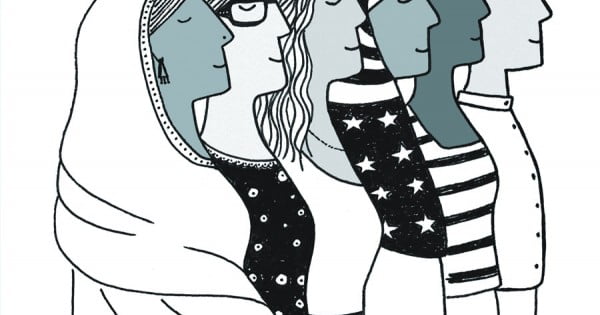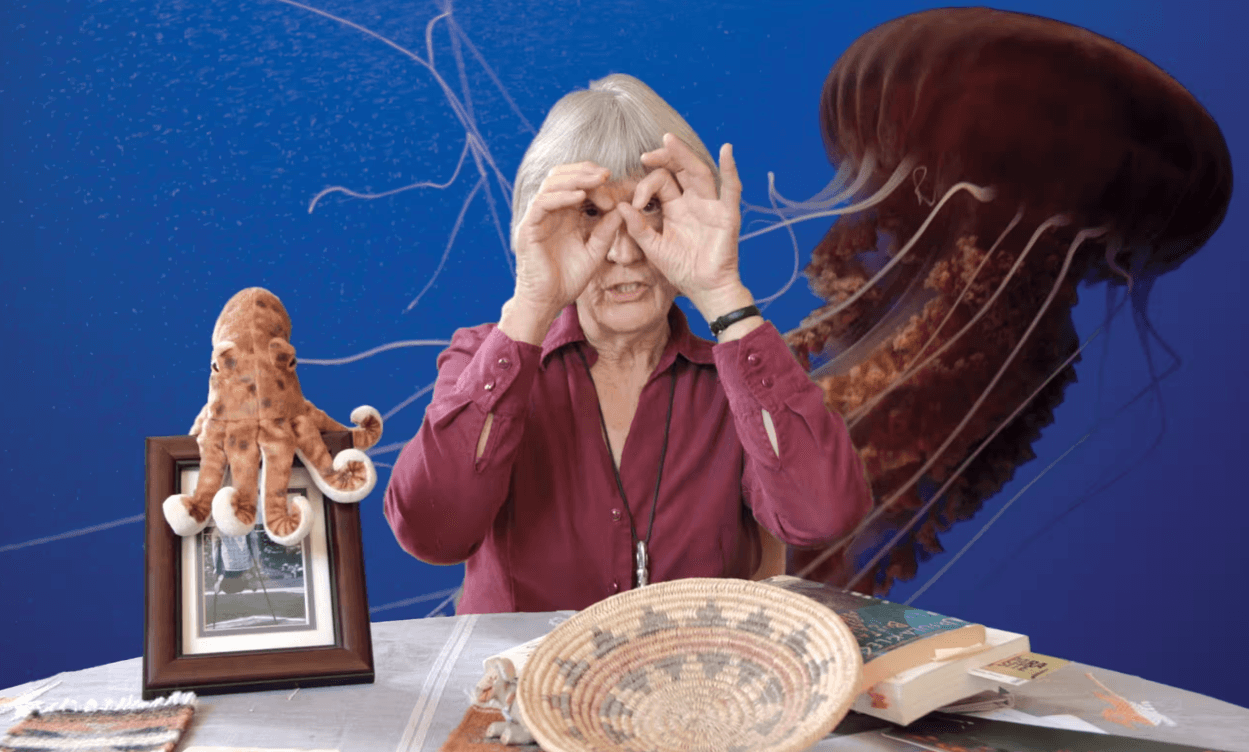To me, it used to be simple: if the feminist movement had originated in the West – a false statement, as pointed out by Nawal El Saadawi, but I was not well-read – it only made sense that everyone was to emulate them. There had to be women that dominated the discourse and would be the best candidates for making the decisions on what actions and beliefs qualified as ‘feminist’. I was focused on becoming the ‘perfect’ feminist, based on the stipulations of mainstream feminism. The result: a deeply narrow conception of
My learning curve is heavily influenced by Muslim women. Having lived in a predominantly non-white area of outer London through my formative years, news stories of I
When I was younger, I remembered feeling like I have betrayed the feminist cause by my preference for modest, comfortable clothing.
My learning curve began during the Burkini banning fiasco. The haunting image of a Muslim woman being forced by male police officers to take off her body-covering garment forced me to rethink my initial and supposedly feminist ideals. I began to seriously question the entrenched idea in Eurocentric feminism that modesty is incompatible with liberation.
It is absolutely unfair that women are so wholly determined by their clothing. Intense focus on the female body – from the controlling nature of the patriarchy to the feminist desire to liberate – have caused clothing to become a political statement; as if one’s political and moral views could be gauged from our clothing. As my friend Alisha pointed out, “the hijab should not be the sole indicator of modest behaviour”, within a broader point on the issue of assigning moral values to clothing.
Furthermore, Eurocentric feminism punishes modest clothing more severely than immodest clothing. When I was younger, I remembered feeling like I have betrayed the feminist cause by my preference for modest, comfortable clothing. It made me envy the confidence of female peers who wore revealing clothes.
The most critical realisation is that this attack on modesty has a specifically Islamophobic intent. Several religions and cultures feature modest clothing yet there are none that are attacked more vehemently than the various forms of hijab. I’m sure you’ve been guilty of judging Muslim women for their clothing decisions. Perhaps you judged a hijabi woman as unfeminist? Or assumed that the burqa/niqab/hijab was forced upon her, rather than it being an independently decided upon expression of her faith? Or, perhaps you praised a non-hijab wearing Muslim woman for being ‘liberated’? I know I have.
That’s Eurocentric feminism at work – criticising modest clothing as stemming from patriarchal desire to ‘imprison’ the female body due to its ‘tempting’ nature. However, it completely ignores that immodest clothing could be equally criticised for catering directly to the male gaze.
I tried to follow the intense and seemingly endless back and forth, believing that the end goal of the most feminist clothing style could be arrived upon. I remember my friend Alisha talking about the hurt of being “criticised for choosing to not wear the hijab, even from members of [her] own faith”. Sharifah, a friend who had chosen the hijab, pointed out to me that in the current era of the policing of female expression “modest clothing is usually correlated with having no freedom of choice”.
That’s when it hit me. I’d completely forgotten the most important aspect of clothing, something I took entirely for granted: choice. Ultimately, what I liked best about clothing was the ability to choose without any consequence of ridicule or harassment. On the other hand, Muslim women’s choices were being attacked by (a) supposed feminists assuming those choices were made under duress, and (b) by religious patriarchy that wanted to control women’s behaviour.
The next hurdle, arguably the most crucial, was unlearning of bias against religion within mainstream feminism. I used to harbour a lot of contempt for organised religion, believing it to be entirely incompatible with feminism. Like a lot of feminists, I saw religion as a tool used to further perpetuate and institutionalise patriarchy, and thus an obstacle to women’s equality. Worst of all, I maintained an attitude of superiority. All that time, I had assumed that the women who defended their religion were unfeminist or didn’t fully understand their own oppression, and therefore required the enlightened ones to educate them.
Also read: What It’s Like To Talk About Gender And Feminism In Kashmir
My contempt and superiority were challenged by a fictional Muslim feminist character (Sana Bakkoush) in the Norwegian TV show SKAM. Sana Bakkoush called out people on their slut-shaming attitude and refuted an assumption of homophobia stemming from religion by pointing out the hatred as the motivation amongst several other badass things she did. Sana Bakkoush called out people on their slut-shaming attitude and refuted an assumption of homophobia stemming from religion by pointing out the hatred as the motivation amongst several other badass things she did.
I had assumed that the women who defended their religion were unfeminist or didn’t fully understand their own oppression, and therefore required the enlightened ones to educate them.
The creators of the show must be commended for the sensitive portrayal of a religious woman, who found incredible strength, comfort and guidance in her faith. Religion was revealed as such a fundamental aspect of the human experience, that my desire to discard it struck me as extremely arrogant and reckless. I realised how guilty Western feminism was of completely marginalising, sometimes persecuting, religious women for their beliefs.
As depicted through the story of Sana Bakkoush, religion and feminism should not be a dichotomy. It became clear to me that this sense of incompatibility was being fabricated within the rhetoric of mainstream feminism when my friend Fatima pointed out that “if people did their research, they’d find the many ways Islam empowers women.” All of the Muslim women I had spoken to expressed their annoyance at being isolated and cited it as a hurdle in being able to identify as ‘feminist’, despite believing in women’s empowerment.
Their voices had been drowned out, I feel. This is prevalent within Eurocentric feminism – where feminists, with good but misguided intentions, tend to speak over and speak for those they would consider ‘voiceless women’. Think about it. H
The emerging focus of intersectionality was helpful. I was validated by the understanding that the struggles of different kinds of women are completely unique and must be treated as such, thus the emancipation of white women should not be conflated with the emancipation of all women.
Thus, by understanding the struggles of Muslim women I have unlearnt crucial unsavoury elements of western feminism. These flaws can be eradicated through inclusivity of more diverse voices to the ongoing development of feminism, as well as the admittance of western feminists themselves. I tend to be the kind of person who measures social change – somewhat naively, some might say – through media representation. So, the fact that a Norwegian TV show had a whole season dedicated to a badass Muslim feminist makes me feel hopeful.
Also read: Intersectional Feminism Is The Need Of The Hour – Here’s Why
Alongside this hope, there remains the fact that I am only scratching the surface and need to learn more to deepen my understanding of the multi-faceted oppression faced by several groups of women, even under the banner of ‘feminism’.
Featured Image Source: Bitch Media
About the author(s)
Richa is talkative, argumentative but, above all, loves all things feminism.




